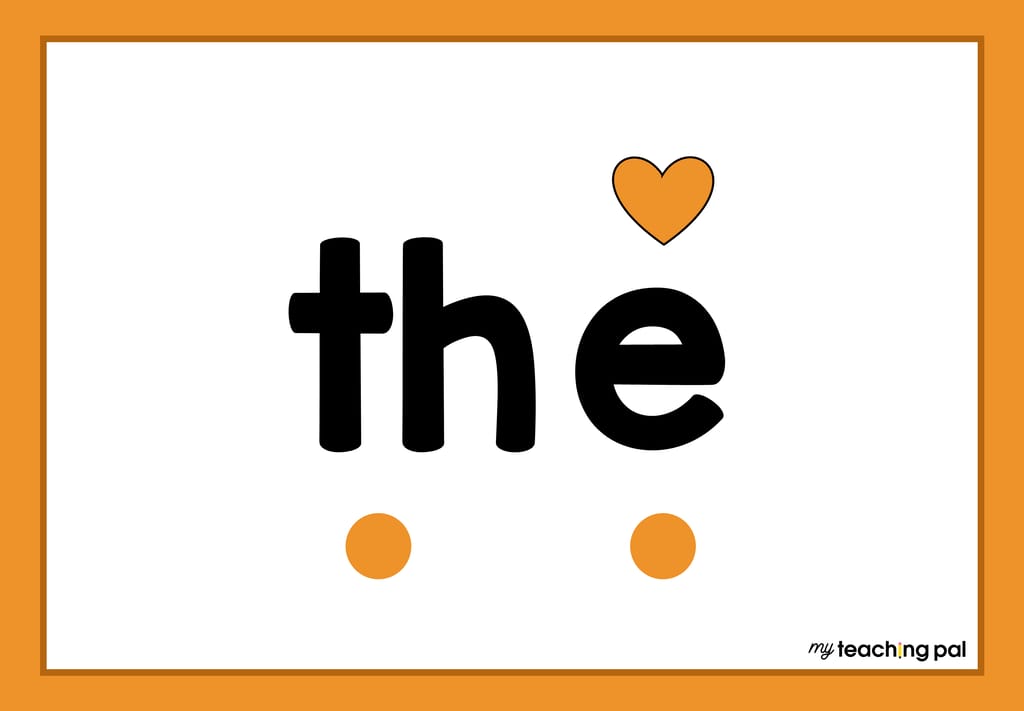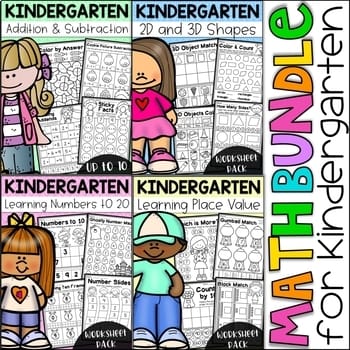
In the world of literacy education, the term “heart words” is gaining traction as a powerful tool for helping students master high frequency words. Also known by other various names such as red words, or irregular words, heart words are a category of words that do not follow regular phonetic patterns, making them challenging for students to decode using conventional phonics rules. Being able to recognize and read all high frequency words instantly is crucial for early readers as these words appear often in texts. While some high frequency words may follow phonetic rules, many are irregular and require a different approach for mastery.
Sight Words Vs. Heart Words
“Sight words” and “heart words” refer to two different instructional methods for teaching high frequency words. When teachers use the “sight word method,” they teach students to memorize words by their shape. Little regard is given to the letters or sounds they contain. Scientific research does not support the “sight word method” as it is ineffective, does not work for all students and ignores the fact that many high frequency words can be sounded out.

Alternatively, when teachers use the “heart word method,” they teach students how to sound out phonetically regular words, such as “like,” “can,” “but,” and “now,” and provide students with strategies to use for words that contain phonetically irregular sounds. For example, once students’ learn that “ow” makes an /ou/ sound, they will be able to read words such as “how,” “now,” “down,” and so on. They do not need to remember these words in a ‘special’ way; they only need to know the rules. Alternatively, for words that contain irregular sounds, teachers use the heart strategy. The heart strategy helps students identify the tricky parts of a word that must be remembered. For example, the word “the” contains an irregular sound as the “e” does not make one of its typical sounds. Therefore, a heart would be placed over the letter “e” to signify that this part of the word is not decodable and must be remembered by heart.
Research on Decodability
Recent research has highlighted the importance of decoding high frequency words rather than memorizing them by sight. Studies indicate that approximately 63% of heart words are decodable, contrary to the misconception that all these words must be memorized as whole units. Understanding the phonetic components of these words helps students recognize them more easily and enhances their memorization of these words. This shift in focus from sight memorization to phonetic decoding aligns with the Science of Reading principles, promoting a more effective method for literacy instruction. (Source: Rocket Readers)
Students are encouraged to use decoding skills where possible when reading heart words, rather than memorizing the whole word by sight. Memorization might offer a short-term solution, but it proves ineffective in the long run. Decoding reinforces phonemic awareness, allowing students to build a strong foundation for reading and spelling.
Which High Frequency Words Do I Teach As Heart Words?
Any words that contain sounds that are irregular are taught as heart words. Many teachers also use the heart word method for words that contain untaught sounds. For example, if students come across the word “with,” and they do not yet know that “th” makes a /th/ sound, these letters are hearted to signify that this portion of the word is tricky and must be remembered by heart.
How Do I Introduce a New Heart Word?
Introducing heart words requires a strategic approach. One effective script involves a gradual process, starting with saying the word, breaking it down into sounds, and putting it all together. For example:
- Say the word. (the)
- Have students repeat the word. (the)
- Use the word in a sentence. (The dog had a bone.)
- Tap and count the sounds in the word together. (2)
- Draw a line for each sound. __ __
- Decode each sound. Start with regular sounds.
- Draw attention to the irregular sounds and heart them.
- Blend sounds together to read the word. (th-e)
- Students take a mental snapshot of the word and skywrite it. (Students and teacher chorally call out the sounds while skywriting the word. Repeat several times.)
- Students erase the word and rewrite it several times. (Students call out the sounds as they spell the word.)

These heart word worksheets are a great tool to use as an independent activity straight after learning a new heart word. They provide practice with mapping and graphing the sounds they hear in high frequency words. There are 285+ pages included for common high frequency words taught in Kindergarten, First Grade and Second Grade.

Another great tool to use are these Decodable High Frequency Word Cards. They are a useful tool for teaching instruction. Both a paper and digital version is included.

Reviewing Heart Words
Once students have learned a heart word, they should continue to review it. This is supported by research on orthographic mapping. Orthographic mapping refers to the process of connecting the visual representation of a word with its phonological aspects, leading to a more lasting memory of the word. According to studies, orthographic mapping requires several encounters with a word before it becomes embedded in a learner’s memory.
Research indicates that repetitive exposure and practice with heart words contribute significantly to the orthographic mapping process. This enables students to recognize words effortlessly and efficiently during reading and writing tasks.
Incorporating this research into teaching practices provides an opportunity to introduce educational products designed to enhance orthographic mapping.

This Heart Word Spelling Center provides students with a structure to follow when using the heart method. It takes them through the orthographic mapping process which leads to the long term storage of words. The center contains over 280 word cards as well as an editable copy to add any other words needed.
Step 1: To begin, students choose a high frequency word card and place it onto the ‘Read it’ section of the mat. Then, they read the word aloud.
Step 2: Next, students move onto the ‘Map it’ section where they map the sounds they can hear in the word. They can use counters or other small objects to cover the circles to show how many sounds the word has. The packet includes an orthographic mapping reference guide.
Step 3: Next, students complete the ‘Graph and Heart it’ section where they spell the HFW by splitting the sounds up into the boxes (use the orthographic mapping guide if you are unsure of how to graph the words). Then, they heart the sound that is irregular or unknown.
Step 4: Finally, students verbally use the word in a sentence, or write a sentence using the word.
Here are some other strategies to review heart words.
- Multisensory approach: Writing heart words in sand or tracing them in the air can enhance memory through multiple sensory channels.
- Word Sorts: organize heart words into categories based on shared patterns, sounds, or spelling rules. This helps students identify similarities and differences.
- Mnemonic devices: creating memorable associations can facilitate quicker recall during reading. For example: SAID, Sammy Always Invites Ducks. Associating the word “said” with the image of Sammy inviting ducks adds a visual element. You can also create a visual aid to reinforce the connection between the mnemonic and the sight word.
By implementing these strategies and incorporating research-backed resources, teachers can create a rich learning environment that supports students in mastering heart words and building a strong foundation for literacy skills.

















Leave a Comment